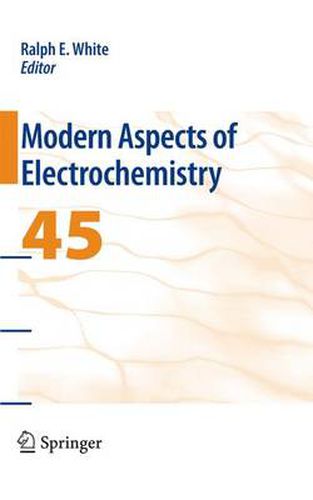Readings Newsletter
Become a Readings Member to make your shopping experience even easier.
Sign in or sign up for free!
You’re not far away from qualifying for FREE standard shipping within Australia
You’ve qualified for FREE standard shipping within Australia
The cart is loading…






This title is printed to order. This book may have been self-published. If so, we cannot guarantee the quality of the content. In the main most books will have gone through the editing process however some may not. We therefore suggest that you be aware of this before ordering this book. If in doubt check either the author or publisher’s details as we are unable to accept any returns unless they are faulty. Please contact us if you have any questions.
This volume contains ?ve chapters. The topics covered are the cathodic reduction of nitrate, for which the key issues are pr- uct selectivity and current ef?ciency; a discussion of ionic l- uids known as molten or fused salts in key industrial processes; the properties of nanowires made of metals and semiconductors by means of electrodeposition into porous templates and template synthesis; and an overview of a range of alloys used in elect- plating, and trends in ammonium electrolysis. Also, included is a review of the applications of synchroton x-ray scattering to the electrochemical interphase. Chapter 1 by Celia Milhano and Derek Pletcher reviews the cathodic reduction of nitrate as a truly fascinating reaction since processes for nitrate removal from drinking water and effluents and reducing nitrates in nuclear waste is an essential step in n- lear waste disposal. The authors also review electrochemical membrane technology not involving the cathodic reduction of - trate. In Chapter 2, the authors discuss substances called ionic l- uids, and the fact that this is really a new more modern term for molten or fused salts. However, the label of ionic liquids is usu- ly applied to the liquid state of salts at or near room temperature, which is a way to differentiate low-melting salts from higher me- ing cousins. These molten or fused salts form the basis of several key industrial processes, and this chapter is primarily devoted to the non-haloaluminate ionic liquids as reviewed by Tetsuya Tsuda and Charles L. Hussey.
$9.00 standard shipping within Australia
FREE standard shipping within Australia for orders over $100.00
Express & International shipping calculated at checkout
This title is printed to order. This book may have been self-published. If so, we cannot guarantee the quality of the content. In the main most books will have gone through the editing process however some may not. We therefore suggest that you be aware of this before ordering this book. If in doubt check either the author or publisher’s details as we are unable to accept any returns unless they are faulty. Please contact us if you have any questions.
This volume contains ?ve chapters. The topics covered are the cathodic reduction of nitrate, for which the key issues are pr- uct selectivity and current ef?ciency; a discussion of ionic l- uids known as molten or fused salts in key industrial processes; the properties of nanowires made of metals and semiconductors by means of electrodeposition into porous templates and template synthesis; and an overview of a range of alloys used in elect- plating, and trends in ammonium electrolysis. Also, included is a review of the applications of synchroton x-ray scattering to the electrochemical interphase. Chapter 1 by Celia Milhano and Derek Pletcher reviews the cathodic reduction of nitrate as a truly fascinating reaction since processes for nitrate removal from drinking water and effluents and reducing nitrates in nuclear waste is an essential step in n- lear waste disposal. The authors also review electrochemical membrane technology not involving the cathodic reduction of - trate. In Chapter 2, the authors discuss substances called ionic l- uids, and the fact that this is really a new more modern term for molten or fused salts. However, the label of ionic liquids is usu- ly applied to the liquid state of salts at or near room temperature, which is a way to differentiate low-melting salts from higher me- ing cousins. These molten or fused salts form the basis of several key industrial processes, and this chapter is primarily devoted to the non-haloaluminate ionic liquids as reviewed by Tetsuya Tsuda and Charles L. Hussey.